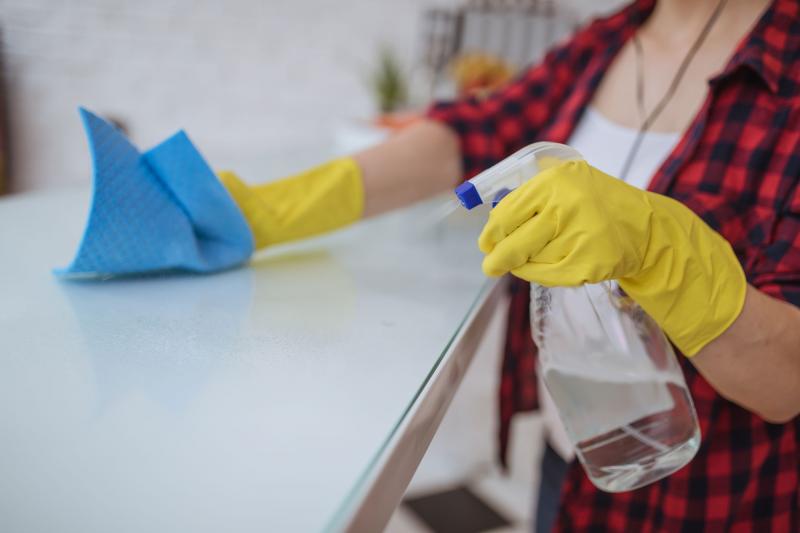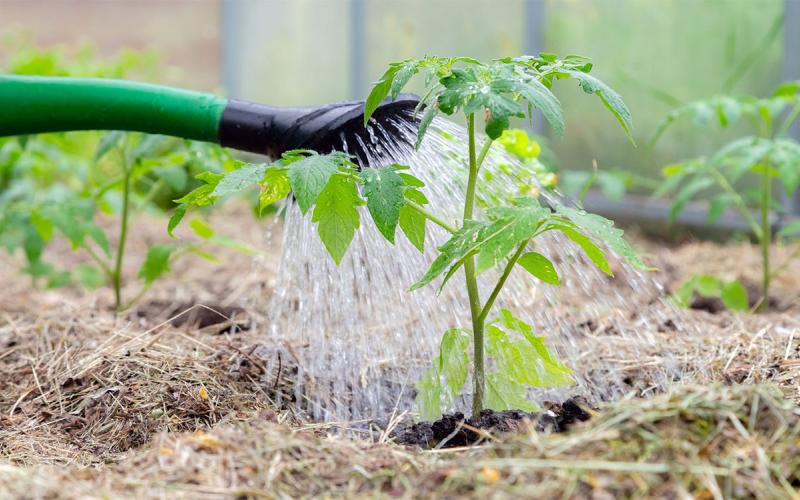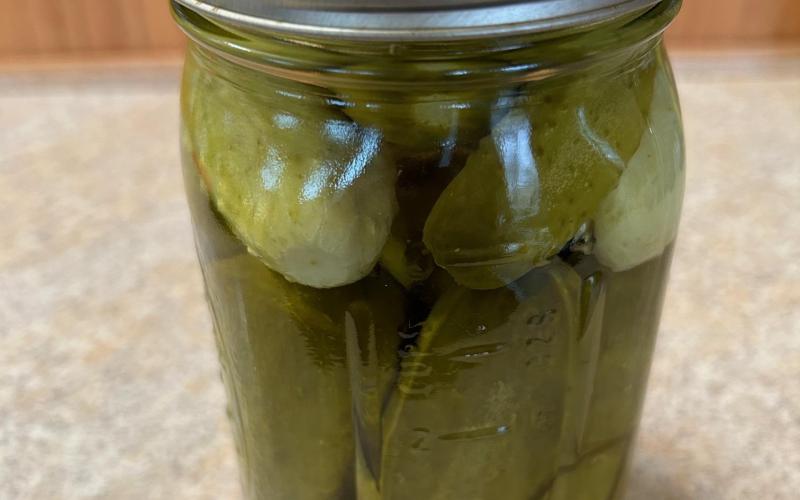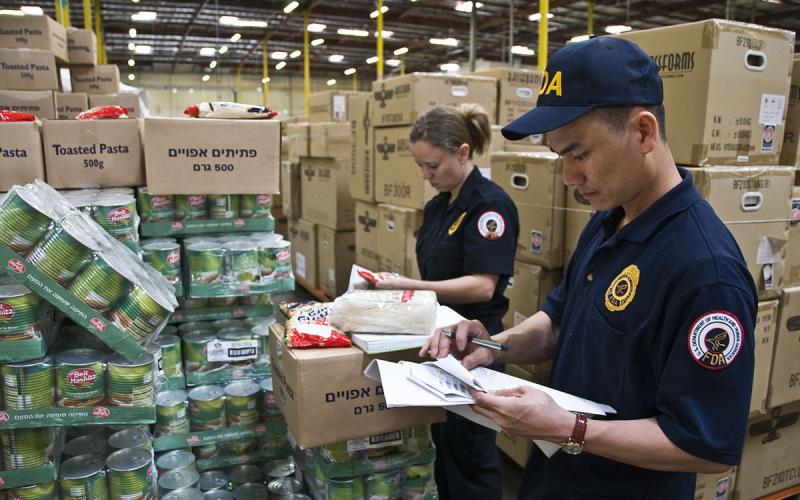
Originally written with contributions by Kimberly Cripps, former SDSU Extension Family & Community Health Field Specialist.
Your kitchen surfaces look clean and shiny. You have wiped up the dust and food particles using hot, soapy water. But are these surfaces really clean?
After surfaces are cleaned with water and dishwashing soap and rinsed with fresh water, we can go one-step further to make sure that these surfaces are sanitized. Sanitizing reduces the number of bacteria and germs on surfaces.
There are a number of sanitizing products that you can buy at the store, but an inexpensive sanitizing solution can be made at home. You will need unscented liquid chlorine bleach, water, and a spray bottle. Mix one teaspoon of the liquid chlorine bleach in one quart of warm water. Place the mixture in a spray bottle and label the bottle so everyone in your household knows what it contains. Do not add more bleach. Using a bleach solution that is too concentrated results in the production of toxic substances.
Surfaces can be counters, cutting boards, dishes, knives, utensils, pots and pans. To sanitize kitchen countertops, clean well with hot, soapy water and rinse. Then spray the countertop with the bleach solution. Let the surface air dry. Besides countertops, use this solution to sanitize refrigerator drawers and shelves, sinks and kitchen equipment such as cutting boards. Remember that you need to clean and sanitizing surfaces before and after use.
If you want to make a larger amount of this sanitizer to wipe down surfaces, use one Tablespoon of liquid chlorine bleach in one gallon of warm water. Use a clean cloth to wipe the surfaces. Let the surface air dry.
Things to Remember
Things to remember when making your own kitchen sanitizer:
- Diluted chlorine bleach is a very effective sanitizer. The amount needed is very small and no chlorine residue will be left behind using a concentration of 1 scant teaspoon of chlorine bleach to 1 quart of water.
- Chlorine reacts quickly and becomes inactive quickly. Detergents and dirt inactivate chlorine; surfaces must be cleaned first to ensure effective sanitation.
- Chlorine solutions need to be made at least weekly and must be stored in a dark place.
- Do not use chlorine with added fragrance, as it is not food-safe.
Remember, kitchen cleaning should include sanitizing.


